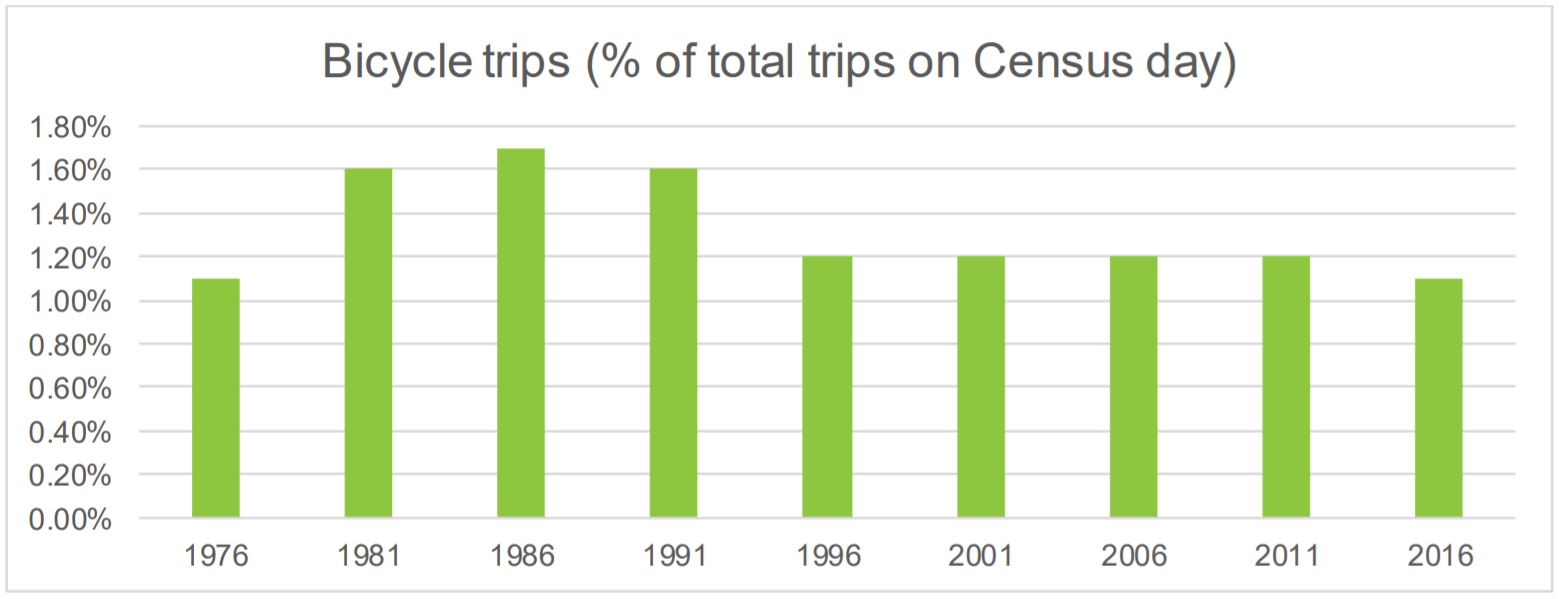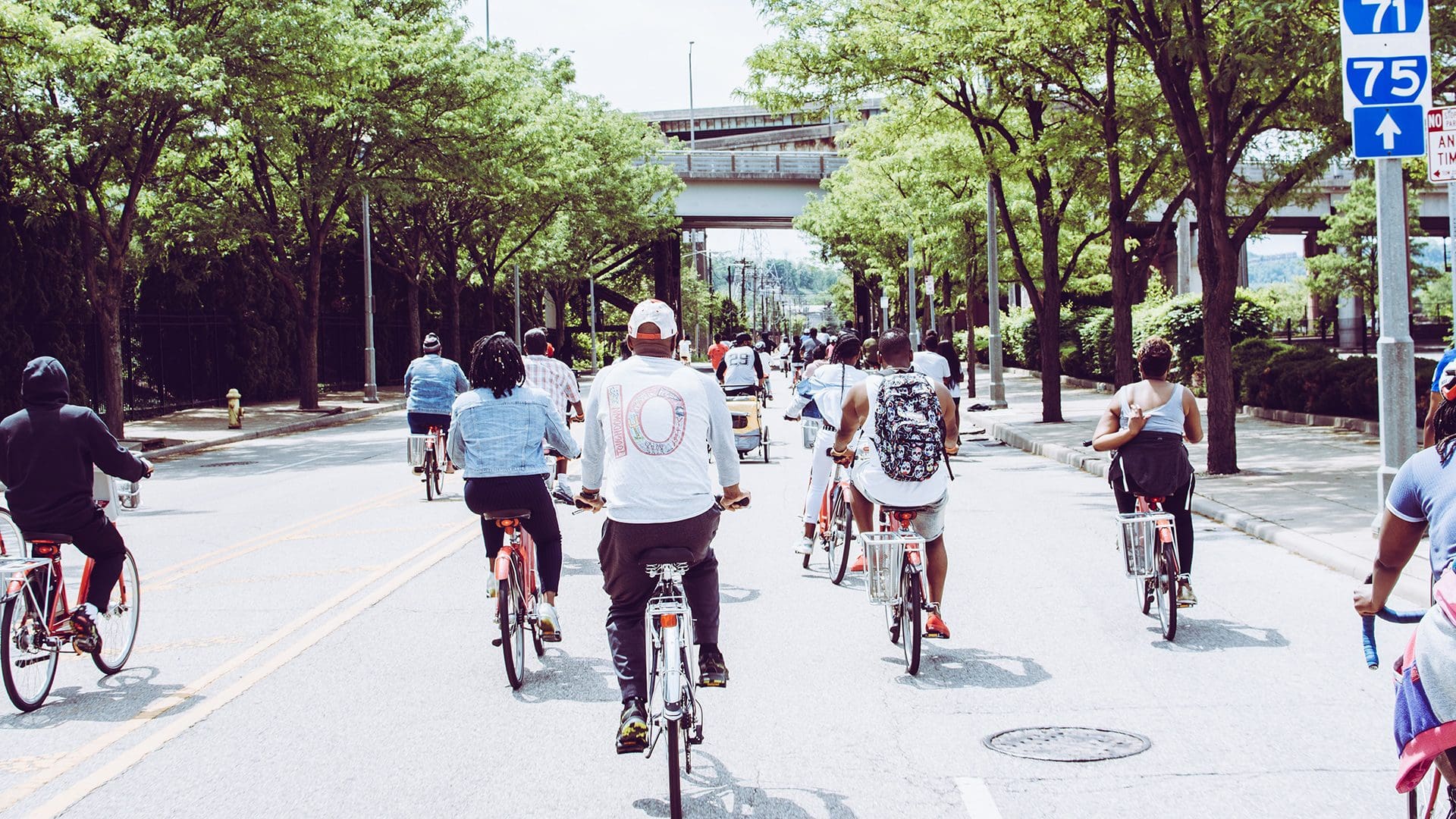December 30, 2019
Opinion | December 30, 2019
In November 2019, the National Transportation Safety Board (NTSB) convened to examine the very important topic of bicycle safety. Bicyclist fatalities are increasing both in number and share of fatalities.
The NTSB identified a number of recommendations, ranging from increasing ridership to awareness of and promotion of biking. They also identified a recommendation to mandate bicycle helmet laws across the 50 states.
Obviously a safety improvement and a good thing, right?
I invite you to look at the issue more closely with me. I’ve been learning about this topic for a long time, and the more I learn, the more I’ve come to believe with certainty that enforcing helmet laws will have an adverse effect on bicyclist safety.
Not a Simple Solution
The effectiveness of helmets in protecting bicyclists is overstated. Helmet promotion has long been touted as a remedy for bike safety, but the research into the effectiveness of helmets has mostly been funded by helmet manufacturers and doesn’t consider the likely leading cause of brain injury – which is your brain clanking around inside your skull when you have a collision.
Of course, helmets can provide good protection to your head, and it’s a good idea to wear one. But I can say with certainty that two things will happen if helmet laws are mandated across the country.
#1: Helmet laws will be enforced inequitably.
Presently, youth helmet laws in the United States are disproportionately targeting minorities and low-income populations.
In Miami, 86 percent of the 460 bike-licensing citations issued over a three-year period went to black people, a stark mismatch to the percentage of the population that is African American (31%).
The Dallas Morning News recently reported that since 2013, 96 percent of arrests and citations outside the downtown area were in census tracts with mostly minority populations, and 86 percent were in neighborhoods with above average numbers of households living below the poverty line.
"Spotty enforcement of an existing bike-helmet ordinance suggest police are using the law as a way to stop and question folks in largely minority neighborhoods."
- Caitlin Giddings, Bicycling.com
Meanwhile, in that report, no arrests were made in areas that are known for being used for recreational cycling – the area that should be prioritized if bicyclist safety was indeed the reason behind stopping and questioning people.
These percentages should make us stop in our tracks. And neither you nor I has to look far to come across an overwhelming collection of examples that demonstrate the strained relationship between law enforcement and communities of color, and the sobering effects of racial bias leading to inequitable enforcement of the laws we have in place.
“While this is in no way the first time a law has been used to racially profile or disproportionately target lower-income populations,” writes Giddings, “it should give us pause about how damaging these laws can be to their stated goals: To make the roads safer.”
If helmet laws are mandated across the United States, we have no reason to believe laws will be enforced any more equitably.
#2: Helmet Laws will reduce ridership, which reduces rider safety.
Helmet laws are nothing new; they have been enacted in different places around the world. And whenever we trace the effects of these enactments, we find they are a deterrent to biking.
In Australia, where this has been studied closely, we saw an immediate and sustained decline in bicycle ridership following the helmet laws enacted in the early 1990s.

Bicycle trips in Australia between 1976 and 2016. There was an immediate and sustained decline following helmet laws enacted in the early 1990s. Source: Bicycle Network
The introduction of helmet laws undermines public investments in infrastructure. For example, the Pronto bikeshare system in Seattle had to shut down partly because of the city’s helmet law for all ages. Likewise, Brisbane and Melbourne have not been able to get traction for their bikeshare systems because of helmet laws.
The truth is, bikeshare systems in the U.S. have a remarkably high safety performance despite disproportionately low helmet use. It is estimated that less than 25% of bikeshare riders wear helmets yet there have only been four recorded fatalities in 165 million bikeshare trips taken in the U.S., easily the best of any transportation mode.
It is the "safety in numbers" effect that keeps bicyclists safe, not helmets.
Helmet use does not correlate to rider safety. The countries with the highest rate of helmet use also have the highest rate of fatalities. Denmark and the Netherlands, the countries with the lowest rate of helmet use, also have the lowest rates of bicyclist fatalities.

Ultimately, the best predictor of safety is ridership.
As more people ride bikes, drivers begin to expect them and drive more safely around them. Encouraging ridership is the most important way to improve safety, and helmets undermine that goal. We need to focus our attention on building infrastructure that’s safe for cyclists, rather than on placing helmets on bicyclists’ heads.
Safety for bicyclists is not correlated to helmet use, but it is directly correlated to ridership. Independent of helmets, the countries with the highest percentage of riders (measured by bicycle travel per inhabitant per year) have the least fatalities (measured by cyclists killed per billion km of bicycle travel). Meanwhile, countries with the lowest percentage of riders have the highest fatality rates.

Countries with the highest percentages of riders have the lowest bicycle fatality rates. Source: OECD
 This has shown to be true in the United States as well. Check out this chart covering a ten-year span in New York City. As daily ridership goes up, annual casualties go down.
This has shown to be true in the United States as well. Check out this chart covering a ten-year span in New York City. As daily ridership goes up, annual casualties go down.
The same is true whether we look at Portland or Minneapolis: wherever ridership increases, bicyclists injuries and fatalities decrease.
But wait… how is a bike helmet different than a seatbelt or motorcycle helmet?
Here’s my short answer: those laws don’t discourage people from driving or riding motorcycles, and even if they did, there would be no public disbenefit to people choosing other modes of transportation.
Oh, and the mode of transportation where we see the most head injuries? Driving! From a public policy standpoint, we should require car occupants to wear helmets before bicyclists.
So, what should we be doing?
Policy is a three-legged stool of economy, environment, and equity. It is meant to serve the public good and enhance public benefit. Promoting multimodalism is critical to achieving these goals. We understand that economy, environment, and equity are all served best by reducing driving and increasing other modes, including bicycling.
I have the privilege of co-leading the Association of Pedestrian and Bicycle Professionals (APBP) Policy Committee along with my colleague Amanda Leahy. We’re looking forward to having important dialogues with others in our profession on this topic. Cutting across organizations and firms, we need to find common ground in the challenges we’re all seeing and experiencing, and work together toward solutions that effectively and equitably improve bicyclist safety. I firmly believe that shifting the focus toward infrastructure is where we’re going to see the greatest safety benefit.
I’d love to hear your thoughts on this topic as well. Feel free to reach out to me directly to talk further!
Conor Semler is an Associate Planner in Kittelson & Associates’ Boston office and a national leader in the planning and design of innovative bicycle facilities. His focus is on improving conditions for walking and bicycling through better evaluation and design.
